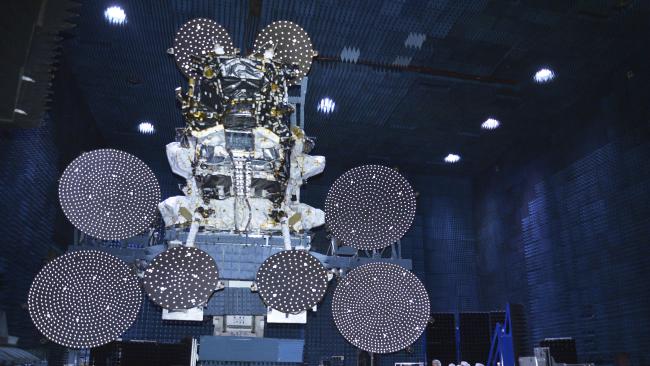
NBN Co’s Sky Muster Satellite successfully entered geostationary orbit above Australia earlier today.
We at Remote Laboratory are generally not fans of Geosynchronous Satellite Internet technology for the following reasons:
- Satellites have a fixed maximum upload and download bandwidth which must be shared amongst all users.
- Satellites have a limited lifespan (often 10 years) before they need to be replaced.
- They are susceptible to damage by space junk and high-energy particles released during geomagnetic storms. If this new satellite is damaged, then all users will lose their connectivity.
- Due to the altitude of the Geosynchronous orbit, each user’s connection have a high round-trip latency of over 1000ms, making it unsuitable for many real-time and interactive Internet applications.
We believe that the future of satellite Internet lies in global systems that use large numbers of small satellites in Low Earth Orbit (LEO) like the Canadian CommStellation project due to be launched in 2018. This is because:
- The lower altitude substantially reduces the connection latency. In the case of CommStellation, latencies as low as 7ms are expected.
- The lower altitude also means that users do not need to install satellite dishes
- The large number of satellites reduces the impact of a single-satellite failure
- The satellites are cheaper to build and launch, so upgrades are easier to deploy.
Nonetheless, we welcome the successful launch of Sky Muster as it is one of the few NBN outcomes that has been delivered, and it will improve the quality of Internet connectivity to those in regional Australia and Australia’s external territories – the existing Satellite Internet offering in Australia is highly oversubscribed. During peak periods, speeds have been reported to be lower than those achievable with the dial-up PSTN modems of yesteryear.
NBN Co estimates that 400,000 premises will be able to access the Internet through this satellite, which they state will be fully operational from mid-2016.
NBN Co have “promised” download speeds of 25Mbps and uploads speeds of 5Mbps, which would be comparable to today’s standard ADSL2+ connections.
Naturally, we believe that even with this new satellite, there will only be temporary relief from congestion. As take-up increases, the limited bandwidth will be shared amongst more and more users and will drop far below these speeds. Over the period of the Sky Muster satellite’s lifespan, Internet applications will only become more bandwidth intensive.
Perhaps the alternative global LEO-based systems like CommStellation will be online by then?
{ Leave a comment }